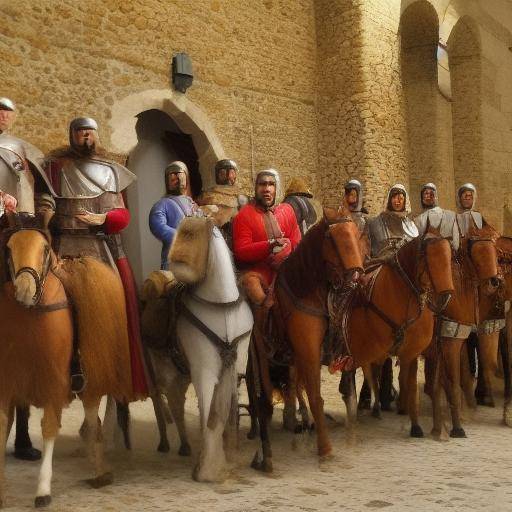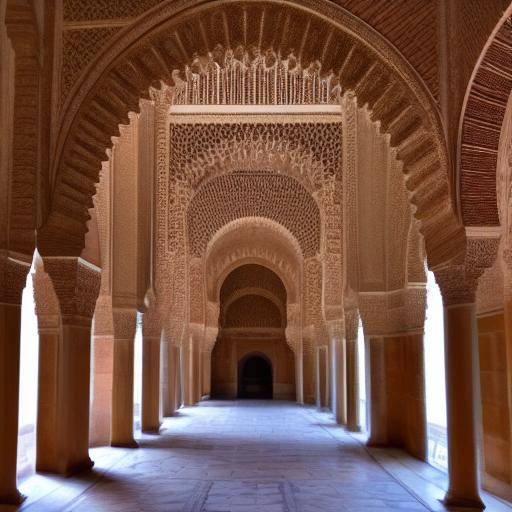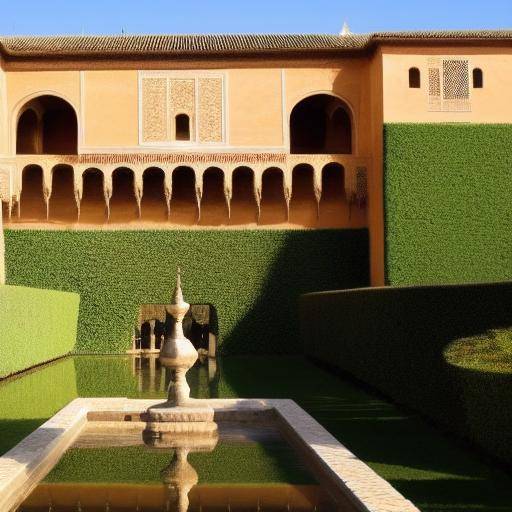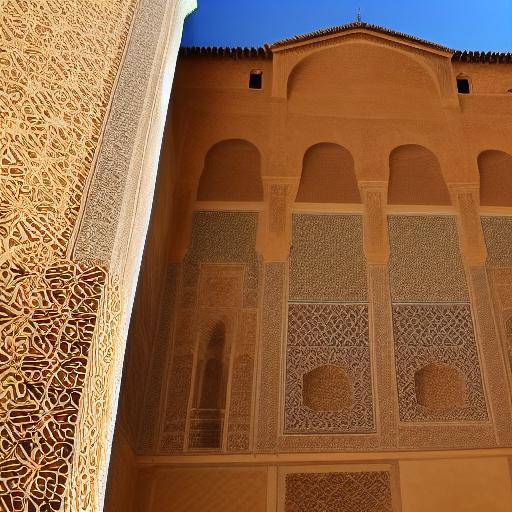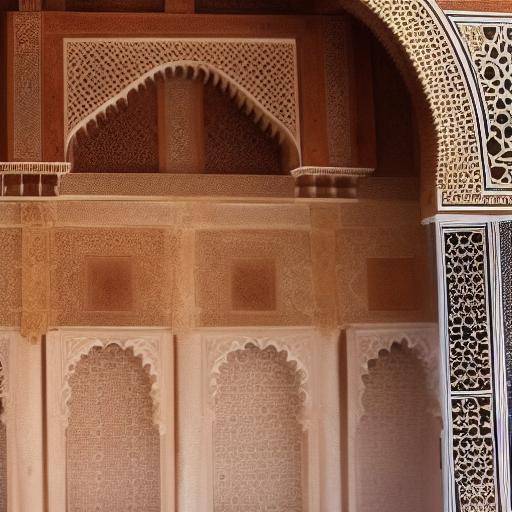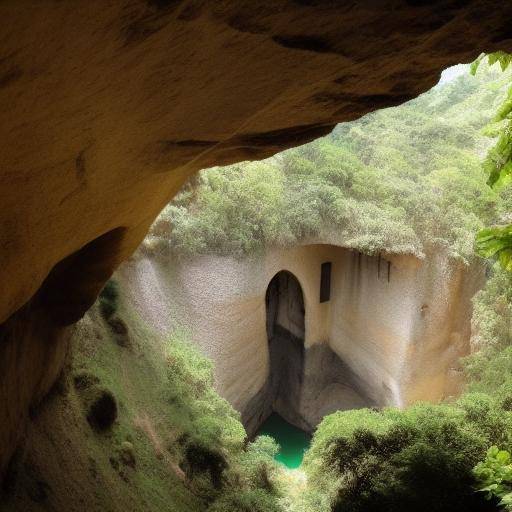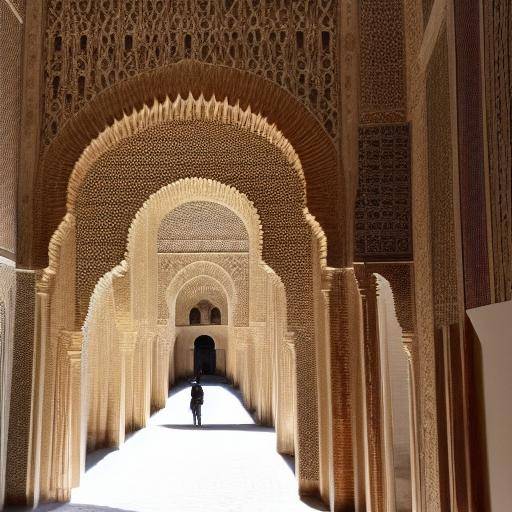
Introduction
The Alhambra, located in the fascinating city of Granada, is a living testimony of the rich history and culture of Spain. From its magnificent architecture to its historical relevance, the Alhambra arouses the curiosity of travelers and enthusiasts of history alike. In this article, we will explore the Alhambra, its influence on the history of cultural coexistence in Spain and its close relationship with Granada, a city impregnated with charm and tradition. Throughout this reading, you will discover the fascinating combination of cultural influences and the importance of the Alhambra in the context of multicultural coexistence in Spain.
History and Background
The Alhambra stands majestically on the top of the hill of the Sabika, dominating the view of Granada. With a history dating back over a thousand years, this monument embodies the complex layers of Spanish history. From its origins as a fortress to its transformation into a spectacular royal palace, the Alhambra has witnessed the evolution of Islamic, Jewish and Christian influence on the Iberian peninsula.
The initial construction of the Alhambra dates back to the 9th century, when its function was purely military. However, it was in the 13th century, during the reign of Muhammad I, that began the construction of the palatial complex that we know today. Subsequently, the Nasrid monarchs introduced architectural and decorative innovations, such as the impressive arabescos and the intricate courtyards, which have left a lasting mark on the Andalusian architecture.
After the Christian conquest in 1492, the Alhambra experienced a remarkable transformation, with the addition of new structures that merged the Renaissance style with the rich Islamic heritage. This cultural mestizaje is reflected in the very structure of the Alhambra, where Christian palaces and Islamic courtyards coexist harmoniously.
Deep analysis
The Alhambra represents a crucible of cultures that has significantly influenced multicultural coexistence in Spain. Its intricate architectural designs and beautiful gardens are silent witnesses of the coexistence of different cultural traditions throughout the centuries. Despite the historical tensions between Islamic, Jewish and Christian cultures, the Alhambra is a symbol of unity in diversity.
The Alhambra has also been instrumental in the preservation and promotion of the cultural legacy of Spain. His architectural and artistic treasures have attracted visitors from around the world, contributing to the spread of the country's cultural wealth. Beyond its aesthetic value, the Alhambra is a tangible testimony of the fruitful interaction between different cultures, which has enriched the cultural heritage of Spain.
Comprehensive review
In exploring the Alhambra and its role in the history of cultural coexistence in Spain, we see the importance of promoting tolerance and respect for cultural differences. The Alhambra serves as a powerful reminder that cultural diversity not only enriches society, but also fosters mutual understanding and harmony.
Conclusions and FAQs
The Alhambra and its influence in the history of multicultural coexistence in Spain have left an indelible mark on the cultural fabric of the country. This architectural gem not only represents a historic milestone, but also embodies the possibility of peaceful coexistence between different cultures. When exploring the Alhambra, Granada and Spain, a fascinating journey is revealed through the history and cultural diversity that has defined the Spanish identity.
Frequently asked questions
Why is the Alhambra so important in the history of Spain?
The Alhambra is fundamental in the history of Spain because of its role as a meeting point between cultures, reflecting the coexistence between Muslims, Jews and Christians. This monument represents the confluence of different architectural and artistic styles, serving as a symbol of cultural diversity that has enriched the history of Spain.
How has the Alhambra impacted on the promotion of cultural tourism in Spain?
The Alhambra has been a magnet for cultural tourism, attracting visitors from around the world due to its rich history and architectural beauty. Its impact on the promotion of cultural tourism in Spain is reflected in the constant flow of travelers who seek to immerse themselves in the cultural and artistic wealth offered by this monument.
What is the relevance of Granada in the history of multicultural coexistence in Spain?
Grenada has witnessed the multicultural coexistence between Muslims, Jews and Christians throughout history, which is reflected in its architecture, traditions and cultural heritage. The presence of the Alhambra in Granada symbolizes this coexistence, making it an emblematic place to understand the history of cultural coexistence in Spain.
How has the Alhambra influenced Spanish art and architecture?
The Alhambra has exerted a significant influence on Spanish art and architecture over the centuries. Its intricate designs, geometric patterns and elaborate ornamentation have left a lasting imprint on the architectural aesthetic of Spain, influencing the creation of various structures and monuments in the country.
What lessons can we learn from the Alhambra in terms of multicultural coexistence?
The Alhambra teaches us the importance of assessing and preserving cultural diversity, as well as fostering a spirit of peaceful coexistence among different communities. His legacy invites us to appreciate the wealth of different cultures, promoting mutual understanding and respect for diversity.
What is the importance of the Alhambra in the current context of Spanish society?
In the current context, the Alhambra remains a symbol of multicultural coexistence in Spain, offering a historical perspective that promotes harmony between different cultures. Its relevance lies in its ability to remind us of the importance of cultural diversity in Spanish society and the need to preserve it for future generations.
Conclusion
Exploring the Alhambra and its role in the history of multicultural coexistence in Spain allows us to understand the profound influence of this monument in the configuration of the Spanish identity. From its impressive architecture to its historical symbolism, the Alhambra represents a legacy of coexistence and cultural coexistence that continues to resonate in the current Spanish society. By assessing the wealth of this cultural heritage, we can nurture a sense of appreciation for the diversity and peaceful coexistence that will define the future of Spain.
Alhambra, Granada and Spain, today and always, remain living testimonies of the multicultural coexistence that has left a lasting mark on the history and identity of the nation.

